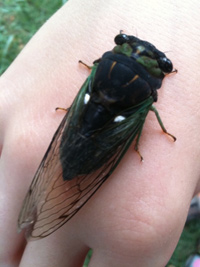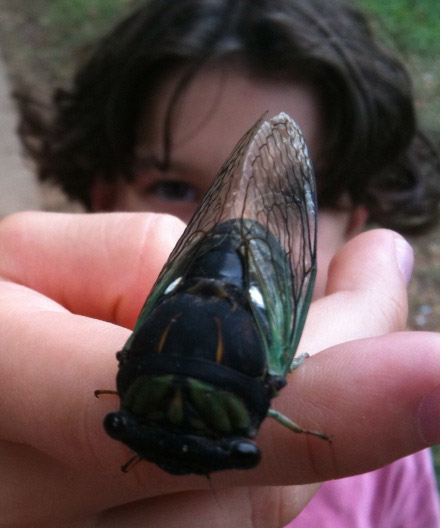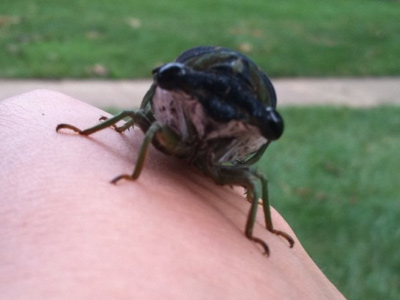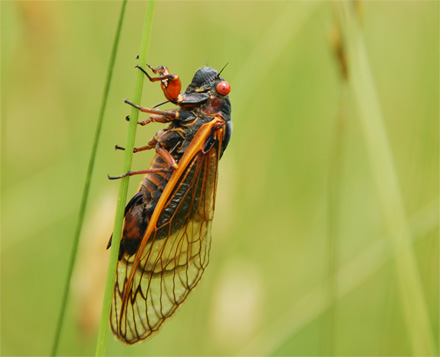The last few days, with slightly cooler temperatures and occasional rain, have given us a bit of relief from the slow-cooker that is Virginia in August—but there's still no mistaking the fact that the dog days are in full swing around here.  Thoreau holds a dog-day cicada.Even when the heat is less than oppressive, the sound—the buzzing, whirring racket of cicadas—still hangs heavy in the air, adding to the lazy haze of late summer days.
Thoreau holds a dog-day cicada.Even when the heat is less than oppressive, the sound—the buzzing, whirring racket of cicadas—still hangs heavy in the air, adding to the lazy haze of late summer days.
The culprit? Dog-day cicadas, those big, bulky insects with wide-set bulgy eyes. If you haven't seen them, you might have noticed their "shells"—the weird, crackly exoskeletons left behind by the nymphs as they turn into adults—clinging to the sides of trees, posts or walls. (And, if you live where there are cicadas and still haven't seen them, you almost certainly will have heard them!)
Naturally, Thoreau is fond of them. Back in 2004, when the so-called "Brood X" periodical cicadas emerged by the millions, he collected them by the bucketful and made some pretty sophisticated observations for a 3-year-old—that some of the cicadas felt heavier than the others, for instance. (He was right; the abdomen of male cicadas is hollow, most likely to serve as a resonating chamber to amplify their high-decibel calls as they seek mates.)
 The cicada hitching a ride on Thoreau's hand in these photos, taken yesterday, might not have made it to today. Once emerging as an adult, a cicada lives for only a couple of weeks—and this docile fellow didn't seem to have much left in the tank by the time we'd found him.
The cicada hitching a ride on Thoreau's hand in these photos, taken yesterday, might not have made it to today. Once emerging as an adult, a cicada lives for only a couple of weeks—and this docile fellow didn't seem to have much left in the tank by the time we'd found him.
But though his time may have been brief, he did something I think we all can admire: he made a big noise while he was here.
 Seeing eye-to-eye with a dog-day cicada.
Seeing eye-to-eye with a dog-day cicada.
 Friday, July 12, 2013 at 1:52PM
Friday, July 12, 2013 at 1:52PM 
 Todd Christopher | Comments Off |
Todd Christopher | Comments Off | 

